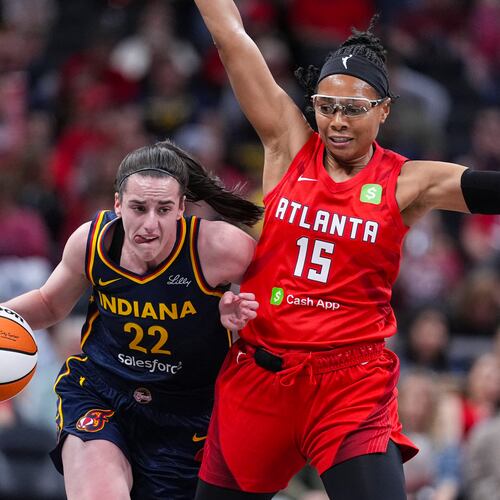Vic Koenning wasn’t exactly taking bows.
The Troy defensive coordinator knew that there were a few factors that contributed to Clemson’s flat performance against the Trojans in the second game of the season. Tigers receivers dropped a few balls. After reaching the national championship game last season, Clemson probably wasn’t razor sharp to play a Sun Belt opponent. But Koenning gave his players and fellow coaches a little credit, too.
“We probably gave them some things that they hadn’t seen out of us,” he told the AJC.
It would be a stretch to say that Troy stonewalled Clemson in the second game of the season, a 30-24 win for the Tigers. But the results at least suggest that it’s within the grasp of Georgia Tech –which plays the No. 5 Tigers Thursday night at Bobby Dodd Stadium – to not get sliced into pieces by this talented and swift offense.
In the 82nd edition of this rivalry, Tech’s ability to hinder the progress of the Tigers’ NFL-bound array of offensive skill players will be a critical element in the outcome.
“If you want to try to play coverage, then they’ll gash you inside, and if you want to load the box, then they’ve got guys who can hit home runs on the outside,” defensive coordinator Ted Roof said. “And a quarterback who throws a great ball, not to mention extends play with his legs, too. There’s a reason that he’s a Heisman Trophy candidate.”
The Heisman Trophy candidate is better known as quarterback Deshaun Watson, the Gainesville High grad who last season became the first player in FBS history to throw for 4,000 yards and run for 1,000. Tech coaches know him well – coach Paul Johnson offered him a scholarship before he reached his sophomore year, an unusual gesture for an uncommon player.
“It was clear he was going to be a great player,” Johnson said this week. “It wasn’t hard to see.”
The formula for an upset is multi-faceted.
Koenning did think that part of his defense’s degree of success – limiting Watson to 27-for-53 passing with two interceptions and allowing 3.8 yards per rush – lay in giving Clemson looks different from what it has relied on previously. Troy typically plays two safeties deep, but used one safety high against Clemson – something Alabama did against the Tigers in the national championship game, Koenning said. The Trojans also played a five-man defensive front, which gave all of its linemen the chance to go one-on-one with Clemson’s front five, a key in the pass-rush pressure that they were able to create.
“Our guys had some success against the guards,” Koenning said.
It will only be uncovered Thursday night how much Roof endeavors to mix things up. Anticipating the short week, Tech coaches prepared their game plan over the summer, but introducing wrinkles in limited practice time might not be wise.
“You can’t just go wholesale change and expect to execute,” Koenning said.
Interesting to note – while Koenning wouldn’t say he spoke with Tech coaches, he did acknowledge that offensive line coach Ron West and defensive line coach Mike Pelton are like brothers to him.
Given Clemson’s offensive weaponry, a shutdown by Tech can hardly be anticipated. Besides Watson, a potential first overall pick in the 2017 draft, Johnson said that wide receiver Mike Williams “is as good as has played here in a long time.” Running back Wayne Gallman, from Grayson High, ran for 100 yards nine times last season. Tight end Jordan Leggett is another NFL prospect who caught two touchdown passes against the Jackets in last year’s rain-soaked 43-24 blowout.
Limiting big plays will be a priority, forcing the Tigers to keep snapping the ball in hopes that they’ll eventually make a mistake and either punt or lose the ball on a turnover. Against three lesser offenses thus far, Tech’s defense has shown its flaws but has largely succeeded in limiting big plays (eight plays of 20 yards or more, tied for 20th nationally) and keeping them off the scoreboard (10.3 points per game, seventh in FBS).
Perhaps Tech’s biggest asset in stopping Clemson’s offense is its own offense. It will be imperative for the Jackets to keep the ball and limit possessions, something they do well. The slower the game’s pace, the more it plays into the Jackets’ favor. A year ago, Clemson averaged 80.5 plays per game. Tech averaged 64.6.
“If you can keep that down to where they run 65 or 70 plays and you’re moving the ball, that puts a lot of pressure on their play caller because he doesn’t have as many (plays to work with),” Johnson said.
Tech broke out against Vanderbilt last Saturday, cranking out 511 yards of total offense, its highest total against a power-conference team since the 2014 Orange Bowl. Clemson’s defense, though, is a different creature.
Turnovers and the kicking game will factor prominently, too.
“We’ve got to get some field position and some help somewhere,” Johnson said. “They’ve got the kind of offense that, if you don’t make them go the length of the field, you’re not going to last very long. You’ve got to play as a team.”
About the Author
Keep Reading
The Latest
Featured


